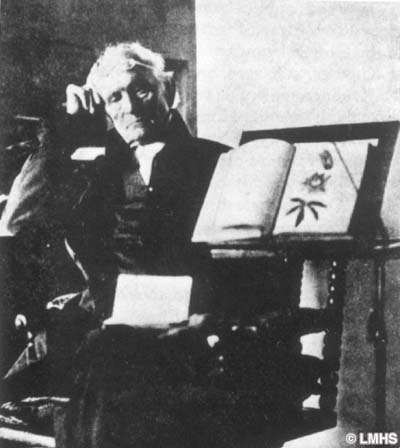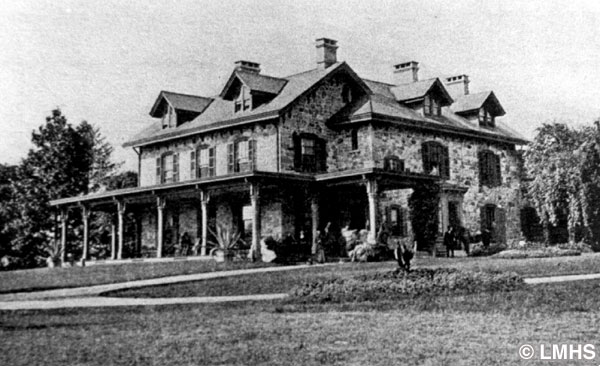Green Hill
Like other Welshmen who were persecuted for their Quaker faith, brothers Charles and Thomas Lloyd were members of a landed aristocratic family, the Lloyds of Dolobran. In 1682, the Lloyd brothers, along with Welsh Quaker leader John ap John, gained ownership of a sizeable portion of the 40,000 acre Welsh Tract. Their rectangular parcel included the southeast corner of Lower Merion, and south and west of the corner of Lancaster Pike and City Avenue.
Thomas Lloyd, his wife, and their children arrived in Pennsylvania in June 1683 after an eight week journey on the ship America. Lloyd’s wife, Mary, died shortly after their arrival. Three of Lloyd’s daughters would later marry men who would each serve as mayor of Philadelphia. Educated at Oxford, Lloyd’s rare qualities became apparent in the developing city of Philadelphia. William Penn appointed Lloyd, only a year after his arrival, president of the Provincial Council. (When Penn returned to England, he put his wigs in Lloyd’s care with the stipulation that he could use them if he wished).
Upon Lloyd’s death at age 54, an unimproved 118 acre tract was sold to David Price, Yoeman, of Merion, who immediately settled on the farmland in 1694. On land, identified from then on as the Greenhill tract, Price built a solid stone house, known for 269 years as the Old Homestead. Over the next dozen years, Price added adjacent land until he owned almost 300 acres.
In 1731, Price conveyed 207 of those acres to his son Issachar, a carpenter: “…houses, outhouses, Edifices and Buildings.” For almost 30 years the property was leased to a succession of farmers: John Hughes, John Evans (who owned land northwest of the Hughes farm), and Ludwig Knoll.

John Hughes was active in colonial affairs, member of the Pennsylvania Assembly, and friend of Benjamin Franklin (who appointed him Stamp Distributor for the Provinces). Upon his death in 1772, Hughes’ land was inherited by his son, John, Jr.
John Hughes, Jr. married Margaret Pashall, the great granddaughter of one of the original Lower Merion settlers, Dr. Thomas Wynne. Both John and Margaret died in their twenties, leaving two daughters. The orphaned sisters were raised at Greenhill by a cousin, Mary Hollingsworth. But the Hughes girls, unmarried, both died in their twenties.
In 1799 Mary married Israel W. Morris, a well-to-do broker and commission merchant, and son of Captain Samuel Morris of Revolutionary War fame. About 12 years later, the couple moved from Philadelphia to Mary’s farm at Greenhill.


From 1815 to 1835, the Morris’ leased the farmland section (…”except for Mansion, lawns, raspberry patch, bath house, old barns, orchard, fields & meadows…”) to John Esray. At Mary Morris’ early death, the Greenhill tract was inherited by Israel and their children, Wistar, Hannah and Jane, all born at the Old Homestead.
Wistar Morris, founder of Morris, Tasker & Company in Philadelphia, held many positions of importance in Philadelphia. He was also a director of the Pennsylvania Railroad, president of the Board of Pennsylvania Hospital and trustee of Haverford College.

In 1863, Wistar married Mary Harris and built a large stone mansion 300 yards west of Old Homestead. Their only daughter, Holly, was born the following year. Thirty years later, Wistar remodeled the spacious country house and built a copy of a castle in Scotland of granite, designed by Mantle Fielding, and trimmed with fossiliferous limestone.
Holly married Rev. Charles Wood but died eight years later, also leaving two small children, Margaret Paschal and Charles Morris who were raised by their grandmother, Mary Harris Morris, in the mansion. Margaret married Logan McCoy; Charles managed the Green Hill Farms Hotel. Wistar Morris’ elaborate Green Hill Farm, with 18 acres, was sold to Friends’ Central School in 1925.

